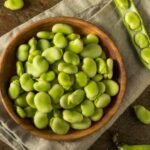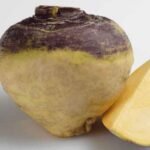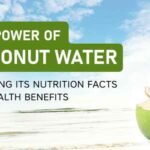Incorporating protein-rich snacks into your post-exercise routine is a crucial strategy for enhancing recovery, building muscle, and achieving fitness goals. Here’s a detailed look at how protein-rich snacks can benefit you:
Watch Video
1. Muscle Repair and Growth
- Muscle Repair: Exercise, particularly strength training and intense workouts, causes small tears in muscle fibers. Protein provides the essential amino acids needed for repairing these micro-tears, facilitating muscle recovery and growth.
- Muscle Protein Synthesis: Consuming protein after exercise stimulates muscle protein synthesis (the process of building new muscle proteins), which helps increase muscle mass and strength over time.
2. Accelerated Recovery
- Reduced Muscle Soreness: Protein helps in reducing delayed onset muscle soreness (DOMS) by aiding in faster muscle recovery. This can lead to less discomfort and improved performance in subsequent workouts.
- Restoration of Energy Stores: Exercise depletes glycogen (the stored form of carbohydrates) in muscles. While carbohydrates are also important for recovery, protein helps in the overall repair process, ensuring a quicker return to your normal training levels.
3. Improved Immune Function
- Immune System Support: Intense exercise can temporarily suppress the immune system. Protein plays a role in supporting immune function by contributing to the production of antibodies and other immune cells, helping to protect against illness and infection.
4. Weight Management
- Satiety and Weight Control: Protein-rich snacks can increase feelings of fullness and satiety, reducing overall calorie intake. This can be particularly beneficial for those looking to manage their weight or reduce body fat.
- Muscle Preservation: While losing weight, it’s important to preserve lean muscle mass. Adequate protein intake helps maintain muscle mass, ensuring that weight loss comes primarily from fat rather than muscle.
5. Practical Snack Ideas
- Greek Yogurt with Fruit: A combination of protein from Greek yogurt and carbohydrates from fruit makes for a well-balanced post-workout snack.
- Protein Shake or Smoothie: Convenient and customizable, protein shakes can be made with whey, casein, or plant-based proteins, and can include fruits, vegetables, and other nutritious ingredients.
- Cottage Cheese with Nuts: Cottage cheese provides casein protein, which digests slowly, while nuts add healthy fats and extra protein.
- Eggs: A versatile option, eggs can be eaten boiled, scrambled, or in an omelet, providing high-quality protein and essential nutrients.
6. Timing and Amount
- Optimal Timing: Consuming a protein-rich snack within 30 minutes to 2 hours post-exercise is generally recommended to maximize recovery benefits.
- Recommended Amount: The ideal amount of protein varies based on individual needs, but a general guideline is to consume around 10-20 grams of protein after a workout.
In summary, integrating protein-rich snacks into your post-exercise routine supports muscle repair and growth, accelerates recovery, aids in weight management, and bolsters immune function. By choosing the right types and amounts of protein, you can enhance your overall fitness progress and maintain a healthy, balanced diet.
Here are seven delicious and nutritious protein-packed snacks to keep you energized and satisfied after your workout:
1. Greek Yogurt with Berries and Nuts
1. Greek Yogurt: The Base
- High-Quality Protein: Greek yogurt is renowned for its high protein content, often containing about twice as much protein as regular yogurt. Protein is crucial for muscle repair and growth, making it an ideal choice for post-workout recovery.
- Calcium: Greek yogurt is a rich source of calcium, which is essential for bone health and plays a role in muscle function and contraction. Adequate calcium intake supports overall skeletal health and can prevent conditions like osteoporosis.
- Probiotics: Greek yogurt contains probiotics, beneficial bacteria that promote gut health. A healthy gut can improve nutrient absorption and support immune function, contributing to overall well-being.
2. Berries: Nutritional Boost
- Antioxidants: Berries, such as blueberries, strawberries, and raspberries, are packed with antioxidants. These compounds help neutralize free radicals, which are unstable molecules that can cause oxidative stress and damage to cells. By reducing oxidative stress, antioxidants help protect your body from inflammation and support recovery.
- Vitamins and Fiber: Berries are rich in vitamins, particularly vitamin C, which is essential for collagen production and immune function. They also provide dietary fiber, which supports digestive health and can help regulate blood sugar levels.
3. Nuts: Adding Crunch and Healthy Fats
- Healthy Fats: Nuts, such as almonds, walnuts, or pecans, are excellent sources of healthy fats, including monounsaturated and polyunsaturated fats. These fats support cardiovascular health and provide sustained energy. Healthy fats are also important for the absorption of fat-soluble vitamins (A, D, E, and K).
- Protein and Fiber: Nuts add additional protein and fiber to the snack, contributing to increased satiety and helping to balance blood sugar levels. This combination helps keep you full longer and can prevent overeating in subsequent meals.
- Essential Nutrients: Nuts are packed with essential nutrients such as vitamin E, magnesium, and zinc. Vitamin E acts as an antioxidant, magnesium supports muscle function and relaxation, and zinc is crucial for immune health and cell repair.
4. Balanced Snack Profile
- Protein: The combination of Greek yogurt and nuts provides a substantial amount of protein, which supports muscle repair and growth.
- Fiber: Berries and nuts add fiber to the snack, aiding in digestion and promoting a feeling of fullness.
- Antioxidants: Berries contribute antioxidants, which help reduce inflammation and support overall health.
- Healthy Fats: Nuts add healthy fats, which are important for heart health and can provide sustained energy.
5. Preparation and Enjoyment
- Simple and Quick: This snack is easy to prepare and can be customized based on your preferences. Simply scoop Greek yogurt into a bowl, top with fresh berries, and sprinkle with nuts.
- Versatility: You can experiment with different types of berries and nuts to find combinations you enjoy. Adding a drizzle of honey or a sprinkle of cinnamon can also enhance the flavor and add extra nutrients.
2. Protein Smoothie
1. Protein Powder: The Core Ingredient
- High Protein Content: Protein powder is a convenient way to boost your protein intake. Depending on the type of protein powder (whey, casein, pea, soy, etc.), it can offer varying benefits, but all are effective at supporting muscle repair and growth.
- Variety of Options: You can choose from various protein powders to suit dietary preferences and needs, such as whey for fast digestion or plant-based options for a vegan diet.
2. Banana: Natural Sweetener and Nutrient Source
- Carbohydrates: Bananas are rich in carbohydrates, which help replenish glycogen stores depleted during exercise. This quick energy source is essential for recovery.
- Potassium: Bananas are an excellent source of potassium, a mineral that helps maintain electrolyte balance and supports proper muscle function, which can be beneficial after intense workouts.
- Natural Sweetness: Bananas add natural sweetness to your smoothie, reducing the need for added sugars and providing a pleasant flavor.
3. Spinach: A Nutrient-Dense Green
- Vitamins and Minerals: Spinach is packed with vitamins A, C, and K, as well as minerals like iron and magnesium. These nutrients support overall health, boost the immune system, and aid in muscle function and repair.
- Antioxidants: Spinach contains antioxidants like lutein and beta-carotene, which help reduce oxidative stress and inflammation in the body.
- Low in Calories: Spinach adds nutrients without significantly increasing the calorie count, making it an excellent choice for a healthy smoothie.
4. Almond Milk: A Dairy-Free Liquid Base
- Low in Calories: Almond milk is a low-calorie, plant-based alternative to dairy milk, making it suitable for those watching their calorie intake or those with lactose intolerance.
- Vitamins and Minerals: Many almond milk varieties are fortified with additional vitamins and minerals, such as calcium and vitamin D, which support bone health.
- Mild Flavor: Almond milk has a mild, slightly nutty flavor that complements the other ingredients in your smoothie without overpowering them.
5. Chia Seeds or Flaxseeds: Extra Nutritional Boost
- Omega-3 Fatty Acids: Both chia seeds and flaxseeds are rich in omega-3 fatty acids, which are important for heart health and reducing inflammation.
- Fiber: These seeds add a good amount of dietary fiber, which supports digestive health and helps maintain steady blood sugar levels.
- Additional Nutrients: Chia seeds are also high in antioxidants and calcium, while flaxseeds are a good source of lignans, which have antioxidant properties.
6. Preparation and Benefits
- Easy to Make: To prepare the smoothie, simply blend together protein powder, a banana, a handful of spinach, almond milk, and optional chia or flaxseeds. Blend until smooth and creamy.
- Customizable: You can adjust the ingredients based on your preferences or nutritional needs. For instance, you might add berries for extra antioxidants or a scoop of Greek yogurt for added protein and creaminess.
- Convenient Recovery: This smoothie provides a balanced mix of protein, carbohydrates, vitamins, minerals, and healthy fats, making it an ideal post-workout snack that supports muscle recovery and overall health.
3. Cottage Cheese with Pineapple
1. Cottage Cheese: The Protein Powerhouse
- High-Quality Protein: Cottage cheese is an excellent source of casein protein, which is slowly digested and absorbed by the body. This slow digestion provides a steady release of amino acids, making it ideal for muscle repair and growth over an extended period.
- Low in Fat: Low-fat or fat-free cottage cheese options are available, offering a high protein content with minimal fat. This makes it a good choice for those aiming to increase protein intake without adding excessive calories.
- Calcium: Cottage cheese is rich in calcium, essential for bone health, muscle function, and nerve transmission. Adequate calcium intake supports overall musculoskeletal health and recovery.
2. Pineapple: The Sweet and Nutritious Addition
- Natural Sweetness: Pineapple adds a natural sweetness to the snack, making it more enjoyable while avoiding added sugars. The natural sugars in pineapple help replenish glycogen stores that are depleted during exercise.
- Vitamin C: Pineapple is a great source of vitamin C, an antioxidant that supports the immune system, aids in the synthesis of collagen (important for joint and muscle health), and helps reduce inflammation.
- Digestive Enzymes: Pineapple contains bromelain, a digestive enzyme that helps break down proteins and supports digestion. Bromelain can also reduce inflammation and may aid in muscle recovery by alleviating soreness.
3. Combining Benefits
- Balanced Nutrients: The combination of cottage cheese and pineapple provides a balance of protein, carbohydrates, and vitamins. The protein from cottage cheese supports muscle repair and growth, while the carbohydrates from pineapple replenish glycogen stores.
- Enhanced Recovery: The protein and natural sugars work together to facilitate recovery after exercise. Protein aids in muscle repair, while the carbohydrates from pineapple provide quick energy replenishment.
- Digestive Health: The bromelain in pineapple helps with protein digestion, making the nutrients in cottage cheese more accessible for the body to use.
4. Preparation and Enjoyment
- Simple to Prepare: To make this snack, simply scoop a portion of cottage cheese into a bowl and top it with fresh or canned pineapple chunks. If using canned pineapple, opt for the variety packed in its own juice rather than syrup to keep it healthier.
- Customizable Options: You can enhance the flavor and nutritional profile by adding other ingredients, such as a sprinkle of chia seeds for extra fiber or a drizzle of honey for added sweetness.
- Versatile Serving: This snack can be enjoyed as a post-workout recovery meal, a light breakfast, or a refreshing dessert. It’s easy to prepare and fits well into various dietary routines.
5. Nutritional Impact
- Post-Workout Recovery: The blend of protein and carbohydrates in this snack is ideal for muscle recovery and replenishing energy stores after a workout.
- Muscle Repair and Growth: The casein protein from cottage cheese supports long-term muscle repair, while the pineapple aids in reducing inflammation and providing essential vitamins.
- Overall Health: The combination of high-quality protein, vitamins, and digestive enzymes supports overall health, including immune function, bone health, and digestive efficiency.
4. Hard-Boiled Eggs
1. Nutritional Benefits of Hard-Boiled Eggs
- High-Quality Protein: Each hard-boiled egg contains approximately 6 grams of protein, which includes all nine essential amino acids required by the body. This makes eggs a complete protein source, ideal for muscle repair and growth.
- Rich in Vitamins and Minerals: Eggs are a good source of several important nutrients, including:
- Vitamin B12: Essential for red blood cell formation and nerve function.
- Vitamin D: Supports bone health and immune function.
- Choline: Important for brain health and muscle function.
- Selenium: An antioxidant that helps protect cells from damage.
- Healthy Fats: Eggs contain healthy fats, including omega-3 fatty acids if you choose eggs enriched with these, which support heart health and reduce inflammation.
2. Convenience and Portability
- Easy to Prepare: Hard-boiling eggs is simple and requires minimal preparation. Just place eggs in a pot, cover with water, bring to a boil, then simmer for about 10-12 minutes before cooling.
- Portable Snack: Hard-boiled eggs are easy to pack and take with you, making them an ideal snack for on-the-go, whether you’re at work, school, or traveling.
3. Versatility and Flavor
- Customizable Seasoning: While hard-boiled eggs are nutritious on their own, adding a sprinkle of salt, pepper, paprika, or other spices can enhance their flavor. You can also try adding a bit of hot sauce, dill, or garlic powder for variety.
- Varied Serving Options: Hard-boiled eggs can be enjoyed as is or incorporated into other dishes, such as salads, sandwiches, or even as a topping for grain bowls.
4. Nutritional Impact
- Muscle Repair and Growth: The high-quality protein in hard-boiled eggs aids in muscle repair and growth, making them an excellent post-workout snack.
- Sustained Energy: The combination of protein and fats in eggs provides sustained energy, helping to keep you full and satisfied between meals.
- Support for Metabolism: The nutrients in eggs support various metabolic processes, including the production of energy and the maintenance of healthy muscle and nerve function.
5. Preparation and Storage Tips
- Cooking Tips: To achieve the perfect hard-boiled egg, start by placing the eggs in a single layer in a saucepan, adding enough water to cover them by about an inch. Bring the water to a boil, then cover the pot and remove it from the heat. Let the eggs sit in the hot water for about 10-12 minutes, then transfer them to an ice bath to cool.
- Storage: Hard-boiled eggs can be stored in the refrigerator for up to one week. Keep them in their shells until ready to eat to maintain freshness. For convenience, you can peel them ahead of time and store them in a sealed container.
5. Edamame
1. Nutritional Benefits of Edamame
- High Protein Content: Edamame is an excellent plant-based source of protein, providing about 17 grams of protein per cup. This makes it a great option for vegetarians and vegans looking to boost their protein intake.
- Essential Amino Acids: Unlike many plant proteins, edamame contains all nine essential amino acids, making it a complete protein source. This is particularly beneficial for muscle repair and growth.
- Fiber: Edamame is rich in dietary fiber, with about 8 grams per cup. Fiber aids in digestion, helps maintain steady blood sugar levels, and promotes a feeling of fullness.
2. Additional Nutrients
- Vitamins and Minerals: Edamame provides several essential vitamins and minerals, including:
- Vitamin K: Supports bone health and plays a role in blood clotting.
- Folate: Important for cell division and production of DNA.
- Iron: Crucial for oxygen transport in the blood and overall energy levels.
- Magnesium: Helps with muscle function, nerve function, and energy production.
- Antioxidants: Edamame contains antioxidants such as isoflavones, which can help reduce inflammation and protect cells from oxidative damage.
3. Preparation and Flavor
- Simple Cooking: Edamame is easy to prepare. You can steam or boil them until tender, usually for about 5-7 minutes. Frozen edamame is widely available and convenient, as it only requires a few minutes of cooking.
- Flavor Enhancements: After cooking, you can season edamame with a variety of flavorings:
- Sea Salt: A classic and simple seasoning that enhances the natural flavor of edamame.
- Garlic Powder: Adds a savory, aromatic touch.
- Chili Flakes: For a spicy kick.
- Lemon Zest: To add a fresh, zesty flavor.
- Soy Sauce or Tamari: For an extra umami flavor, if desired.
4. Nutritional Impact
- Muscle Repair and Growth: The high protein content in edamame supports muscle repair and growth, making it an ideal post-workout snack.
- Digestive Health: The fiber in edamame promotes healthy digestion and helps prevent constipation.
- Energy and Satiety: The combination of protein and fiber provides sustained energy and helps keep you full, making it easier to manage appetite and maintain a healthy weight.
5. Versatility and Uses
- Snack Option: Edamame can be enjoyed on its own as a nutritious snack, either warm or at room temperature.
- Salads and Dishes: Edamame can be added to salads, grain bowls, soups, or stir-fries for a protein boost and added texture.
- Meal Prep: Cooked edamame can be stored in the refrigerator for a few days, making it a convenient option for meal prep and quick snacks.
6. Turkey and Avocado Wrap
1. Lean Turkey Breast: Protein Power
- High-Quality Protein: Turkey breast is a lean source of high-quality protein, providing approximately 24 grams of protein per 3-ounce serving. Protein is essential for muscle repair, growth, and overall body maintenance.
- Low in Fat: Skinless turkey breast is low in fat, making it a great option for those aiming to reduce fat intake while still getting ample protein.
- Rich in Vitamins and Minerals: Turkey breast provides essential nutrients, including:
- B Vitamins: Such as niacin (B3) and vitamin B6, which are important for energy metabolism and brain function.
- Selenium: An antioxidant that supports immune function and thyroid health.
2. Avocado: Healthy Fats and Creaminess
- Healthy Fats: Avocado is rich in monounsaturated fats, which are heart-healthy fats that can help lower bad cholesterol levels and support overall cardiovascular health.
- Nutrient-Dense: Avocados are packed with vitamins and minerals, including:
- Potassium: Helps regulate blood pressure and supports heart health.
- Vitamin E: An antioxidant that protects cells from damage.
- Folate: Important for cell division and overall health.
- Creamy Texture: The creamy texture of avocado adds richness to the wrap and enhances the overall mouthfeel.
3. Whole-Grain Tortilla: Carbohydrates and Fiber
- Complex Carbohydrates: Whole-grain tortillas provide complex carbohydrates that offer sustained energy. They help replenish glycogen stores and provide a steady release of energy.
- Fiber: Whole-grain tortillas are a good source of dietary fiber, which supports digestive health and helps maintain a feeling of fullness.
- Nutritional Benefits: Whole-grain options typically contain more vitamins and minerals compared to refined grains, including B vitamins, iron, and magnesium.
4. Preparation and Assembly
- Simple to Make: To prepare the wrap, simply lay out a whole-grain tortilla, spread a slice of avocado on it, and top with slices of lean turkey breast. You can add additional veggies like spinach, tomatoes, or cucumbers for extra nutrients and crunch.
- Customization: The wrap can be customized with various seasonings or condiments to suit your taste. Consider adding a sprinkle of black pepper, a squeeze of lime juice, or a drizzle of hot sauce for added flavor.
5. Nutritional Impact
- Balanced Nutrition: The turkey provides protein, the avocado adds healthy fats, and the whole-grain tortilla offers carbohydrates and fiber. This combination makes the wrap a well-rounded snack that supports muscle recovery, energy levels, and satiety.
- Filling and Satisfying: The mix of protein, healthy fats, and fiber makes this wrap a satisfying and filling snack, which can help control hunger and prevent overeating later.
6. Versatility and Serving
- Portable Snack: The turkey and avocado wrap is easy to pack and take on the go, making it a convenient option for busy schedules.
- Meal Option: It can also be served as a light meal, paired with a side of fresh vegetables or a small salad for a complete lunch or dinner.
- Meal Prep: This wrap can be prepared in advance and stored in the refrigerator, making it a great option for meal prepping.
7. Hummus and Veggies
1. Hummus: Protein and Fiber-Rich Dip
- Chickpeas Base: Hummus is primarily made from chickpeas, which are a great source of plant-based protein. A standard serving of hummus (about 2 tablespoons) contains approximately 2-3 grams of protein.
- High in Fiber: Chickpeas provide dietary fiber, which aids in digestion, helps maintain steady blood sugar levels, and promotes satiety. A serving of hummus offers about 1-2 grams of fiber.
- Healthy Fats: Hummus often contains tahini (ground sesame seeds) and olive oil, which add healthy fats. These fats are beneficial for heart health and help in the absorption of fat-soluble vitamins.
2. Nutritional Benefits of Hummus
- Vitamins and Minerals: Hummus is a good source of various vitamins and minerals, including:
- B Vitamins: Such as folate (B9), which supports cell growth and metabolism.
- Iron: Essential for oxygen transport and overall energy levels.
- Magnesium: Supports muscle and nerve function.
- Antioxidants: Ingredients like garlic and lemon juice in hummus provide antioxidant properties, which help combat oxidative stress and support immune health.
3. Veggies: Crunchy and Nutrient-Packed
- Carrots: Rich in beta-carotene (which the body converts to vitamin A), carrots support eye health, immune function, and skin health. They are also a good source of fiber.
- Cucumbers: Low in calories and high in water content, cucumbers provide hydration and essential nutrients like vitamin K. They are also a good source of antioxidants.
- Bell Peppers: Packed with vitamin C, bell peppers support immune health and enhance iron absorption. They also provide fiber, vitamin A, and various antioxidants.
4. Nutritional Impact of the Combo
- Balanced Nutrition: The combination of hummus and veggies provides a well-rounded mix of protein, fiber, healthy fats, and essential vitamins and minerals. This balance supports overall health, aids digestion, and promotes a feeling of fullness.
- Energy and Satiety: The protein and fiber from hummus, along with the vitamins and minerals from the vegetables, offer sustained energy and help keep you satisfied between meals.
- Digestive Health: The fiber in both hummus and vegetables promotes healthy digestion and can help prevent constipation.
5. Preparation and Serving
- Easy to Prepare: Hummus can be bought pre-made or easily prepared at home using a food processor. For homemade hummus, blend chickpeas with tahini, olive oil, lemon juice, garlic, and seasonings to taste.
- Variety of Veggies: You can use a wide range of fresh vegetables for dipping, including carrots, cucumbers, bell peppers, cherry tomatoes, celery, and snap peas.
- Presentation: For an appealing presentation, arrange the veggies around a bowl of hummus on a platter. You can also add a sprinkle of paprika or a drizzle of olive oil on top of the hummus for extra flavor.
6. Versatility and Serving Suggestions
- Snack or Meal Addition: Hummus and veggies make a great snack, but they can also be included as a side dish in meals, such as alongside a sandwich or wrap.
- Meal Prep: This combination is ideal for meal prepping. Store the hummus in an airtight container and the veggies in a separate container in the refrigerator for easy access throughout the week.
- Customizable Options: Feel free to experiment with different hummus flavors (like roasted red pepper or spicy) and a variety of vegetables to keep things interesting.
Incorporating these protein-rich snacks into your post-workout routine can help optimize recovery and support your fitness goals. Whether you prefer something sweet, savory, or a mix of both, these options will keep you on track and feeling great.
FAQs
1. What is protein and why is it important?
Answer: Protein is a macronutrient made up of amino acids, which are essential for building and repairing tissues, making hormones, and supporting immune function. It’s crucial for muscle growth, repair, and overall health.
2. How much protein do I need daily?
Answer: The Recommended Dietary Allowance (RDA) for protein is 46 grams per day for women and 56 grams per day for men. However, athletes and those with higher activity levels may need more.
3. What are the best sources of protein?
Answer: Excellent sources of protein include lean meats (chicken, turkey, beef), fish, eggs, dairy products, legumes (beans, lentils), nuts, seeds, and plant-based proteins like tofu and tempeh.
4. Can I get enough protein from a vegetarian diet?
Answer: Yes, vegetarians can meet their protein needs through plant-based sources like legumes, nuts, seeds, tofu, tempeh, and dairy products. Combining different plant proteins can also provide all essential amino acids.
5. What is the difference between complete and incomplete proteins?
Answer: Complete proteins contain all nine essential amino acids in sufficient quantities, found in animal products and some plant sources like quinoa and soy. Incomplete proteins lack one or more essential amino acids and are found in most plant foods.
6. How can I increase my protein intake?
Answer: To increase protein intake, incorporate more high-protein foods into your meals, use protein-rich snacks, and consider protein supplements like whey or plant-based protein powders if needed.
7. Is too much protein harmful?
Answer: Excessive protein intake can put strain on the kidneys and may lead to dehydration and nutrient imbalances. It’s important to balance protein intake with other nutrients and consult with a healthcare provider if you have any concerns.
8. What are protein supplements and are they necessary?
Answer: Protein supplements, such as whey or plant-based powders, provide a convenient way to increase protein intake. They are not necessary for everyone but can be helpful for those with increased protein needs or difficulty meeting their requirements through food alone.
9. When is the best time to consume protein?
Answer: Consuming protein within 30 minutes to two hours after a workout can help with muscle repair and recovery. However, distributing protein intake throughout the day is also beneficial for overall health and muscle maintenance.
10. Can protein help with weight loss?
Answer: Protein can aid in weight loss by increasing satiety, reducing appetite, and preserving lean muscle mass during calorie restriction. It also has a higher thermic effect compared to fats and carbohydrates, meaning it burns more calories during digestion.
11. What is the role of protein in muscle building?
Answer: Protein provides the building blocks (amino acids) needed for muscle growth and repair. Consuming adequate protein, combined with strength training, helps promote muscle hypertrophy and recovery.
12. Are there any risks associated with high-protein diets?
Answer: High-protein diets can be risky for individuals with kidney disease or those at risk of kidney issues. They may also lead to nutrient imbalances if not balanced with other food groups.
13. What are some protein-rich snacks I can have?
Answer: Protein-rich snacks include Greek yogurt, cottage cheese, hard-boiled eggs, nuts, seeds, protein bars, and edamame.
14. How can I tell if I’m getting enough protein?
Answer: Signs of adequate protein intake include good muscle mass, strength, and recovery. If you experience fatigue, muscle weakness, or frequent illness, you may need to evaluate your protein intake.
15. Can I get protein from fruits and vegetables?
Answer: Fruits and vegetables generally contain lower amounts of protein compared to other sources. However, some vegetables like spinach and broccoli do contain protein, though they should be complemented with other protein-rich foods.
16. What are some common misconceptions about protein?
Answer: Common misconceptions include the belief that all protein sources are equal, that high-protein diets are inherently unhealthy, and that only animal products provide complete proteins.
17. How does protein affect metabolism?
Answer: Protein has a higher thermic effect compared to fats and carbohydrates, meaning it requires more energy to digest and metabolize, which can slightly boost overall metabolism.
18. Is plant-based protein as effective as animal-based protein?
Answer: Plant-based proteins can be as effective as animal-based proteins for muscle building and overall health when consumed in adequate amounts and from a variety of sources to ensure a complete amino acid profile.
19. How can I balance protein with other nutrients in my diet?
Answer: Balance your diet by including a variety of protein sources, along with fruits, vegetables, whole grains, and healthy fats. Aim for a well-rounded plate with all essential nutrients.
20. Can protein help with recovery from exercise?
Answer: Yes, protein helps repair and rebuild muscle tissue damaged during exercise, reducing muscle soreness and improving recovery time. Consuming protein post-workout can enhance these benefits.








